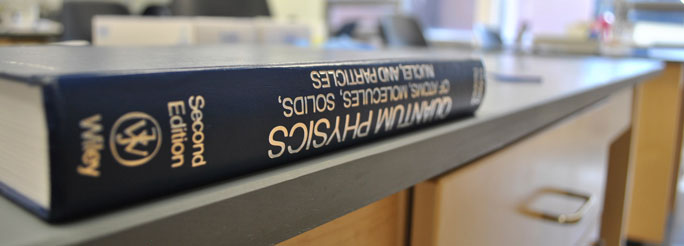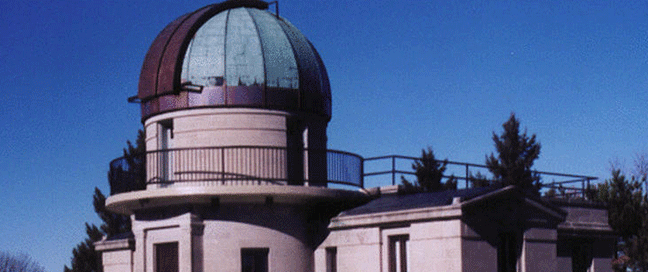Skip Sub Menu
Why Study Physics & Astronomy at Drake

- The Department of Physics and Astronomy at Drake University consists of 12 physicists and astronomers involved in teaching, providing a student to instructor ratio of about 4/1.
- Students work closely with faculty receiving a lot of personal attention in and out of the classroom. Faculty are always available to help students and answer their questions. They follow the student's progress in detail.
- The environment at the department is friendly and congenial. Students are always encouraged in their studies. They are also encouraged to work in teams, developing collaborative skills, and to interact academically and socially.
- Students are helped to obtain summer internships at other universities and national laboratories to obtain further research experience in various environments.
- Practically all the department graduates are admitted to prestigious graduate schools for Ph.D. programs. Some students who take Physics or Astronomy as pre-med are admitted to top quality medical schools.
- The department has a chapter of the Society of Physics Students, engaging in student research grant proposals, outreach programs, and social activities (see department personnel).
- The department and Drake University offer scholarships. The department administers the prestigious Physics Prize Test once a year. The winner receives a full scholarship.
- The department operates the municipal observatory which gives astronomy students hands-on experience and the opportunity to participate in public educational programs.
- The department emphasizes diversity, actively seeking to enroll students from groups that are underrepresented in science and to welcome them in the physics and astronomy community.
- The Department of Physics and Astronomy is a member of the Drake Undergraduate Collaborative Science Institute (DUSCI), the Iowa Space Grant Consortium (ISGC) and has a chapter of the Society of Physics Students (SPS).
- All faculty members are engaged in research in their respective fields often in collaboration with other faculty at Drake Univ. and/or other national and international institutions. They acquire funding, write papers and give conference and invited talks. The Department publishes on the average 18 papers per year, most of them in atomic physics. These publications have received thousands of citations. Students are expected to become active participants in research, the level of their efforts being related to the degree they pursue. Practically all students participate in regional, national and international conferences and co-author conference and peer-reviewed papers. Research participation usually starts the second year. One semester, typically the Springsemester of the second year, is available for studies abroad. Most students also acquire research experience during summer Research Experiences for Undergraduates (REUs) or internships at other universities, national laboratories or companies.
- The majority (about 70-90%) of the graduates of the department continue graduate studies in Physics, Astronomy, Astrophysics, Medical Physics, Biophysics, Mathematics, Computer Science, Robotics, Environmental Science, Education, Actuarial Science, Medicine or Law. Examples of graduate schools attended by Drake Physics and Astronomy graduates include, MIT, Cal. Tech., Univ. of Colorado, Univ. of Chicago, Univ. of Texas, UCLA, UC Irvine, UC Davis, Carnegie Mellon Univ., Stony Brook Univ., Univ. of Maryland, Univ. of Michigan at Ann Arbor, Vanderbilt Univ., Univ. of Minnesota, Notre Dame Univ., Univ. of Illinois, Univ. of Kentucky, Univ. of Wisconsin, Univ. of Iowa, Iowa State Univ., Kansas State Univ., Ohio State Univ., Northwestern Univ., College of William and Mary, Univ. of British Columbia, George Mason Univ.,Univ. of Houston, Mayo Clinic Medical School, Chicago Fine Arts Institute and others. Several students follow engineering especially through the Physics/Engineering program with Washington University. Some students prefer to find immediate employment in software or high-technology companies. Several of the students win Goldwater Scholarships or Fellowships from the National Science Foundation or the graduate schools they attend.
The Department of Physics and Astronomy has new state-of-the-art collaborative undergraduate laboratories, a biophysics research laboratory, collaborative computer rooms and classrooms and powerful computers. It also operates the Drake Municipal Observatory where regular public nights and other events take place.
The new Biophysics and Advance Physics Laboratory at the Department opened January 30, 2013. This is a multi-functional research and instruction space with modern equipment and instructional media.

The department also manages and presents Public Nights at the Drake Municipal Observatory.

A&S Calendar 

